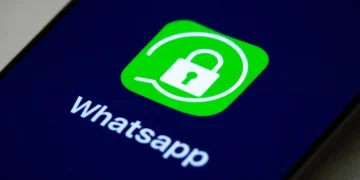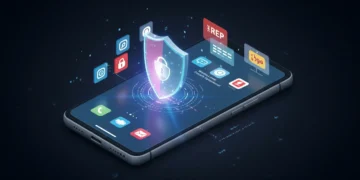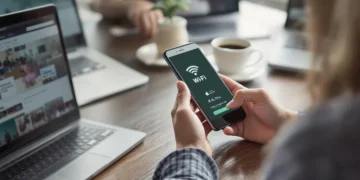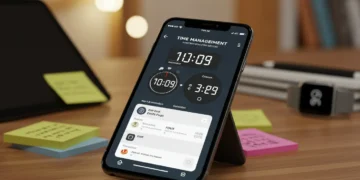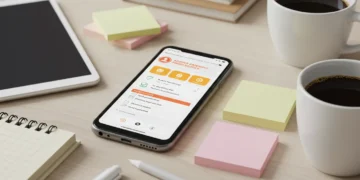That nagging urge to check your phone? The phantom vibrations in your pocket? The anxiety that creeps in when your battery hits 10%? Yeah, we’ve all been there.
But what if just 3 days away from your smartphone could actually rewire your brain? Not in some woo-woo, pseudo-science way, but in a measurable, neurologically-proven reset that can break unhealthy patterns and restore your mental clarity?
Recent research suggests exactly that a 72-hour break from your phone might be the mental reboot you’ve been searching for. Let’s dive into what happens when you put down your phone for three days and what science tells us about this surprisingly powerful reset.
What Happens to Your Brain During a 3-Day Phone Detox
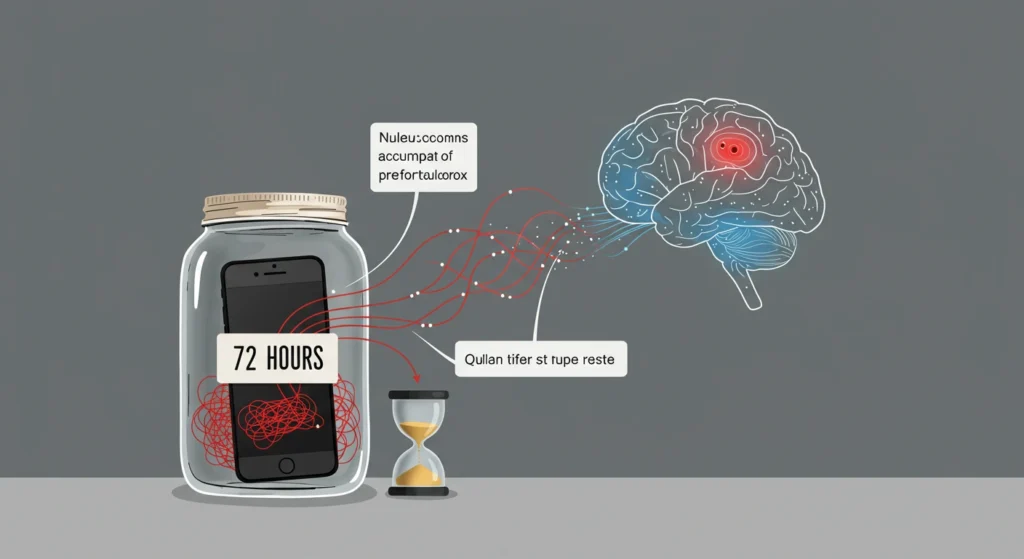
The science behind smartphone use is fascinating and a bit alarming. A groundbreaking 2025 study published in Computers in Human Behavior found that a mere 72-hour break from smartphones triggered measurable changes in brain activity patterns related to reward processing and craving mechanisms.
Using fMRI scans, researchers observed participants before and after a 3-day phone restriction period. The results? When shown images of smartphones, subjects showed reduced activation in brain regions responsible for reward anticipation the same areas involved in addiction pathways.
What’s particularly striking is that these changes happened for everyone, not just heavy users. Even casual smartphone users experienced neuroadaptations similar to those seen in substance withdrawal protocols.
But here’s where it gets interesting by day three, participants reported decreased cravings that correlated with stabilized brain chemistry, specifically glutamate levels in the prefrontal cortex. This area handles your executive function and self-control, suggesting that your brain actually regains control over impulsive behaviors within just 72 hours.
The Hour-by-Hour Breakdown of a Phone Detox
If you’re considering taking the plunge, knowing what to expect can help you push through the rough patches. Research shows a pretty consistent pattern that most people experience:
Hours 0-24: The Anxiety Phase
- 68% of participants report heightened stress and FOMO (Fear of Missing Out)
- Your brain is essentially going through withdrawal
- You’ll likely check your empty pocket dozens of times
- Sleep may be disrupted as your brain adjusts
During this phase, I personally notice my hands feeling strangely empty and my mind racing with thoughts about what messages I might be missing. The anxiety is real but temporary.
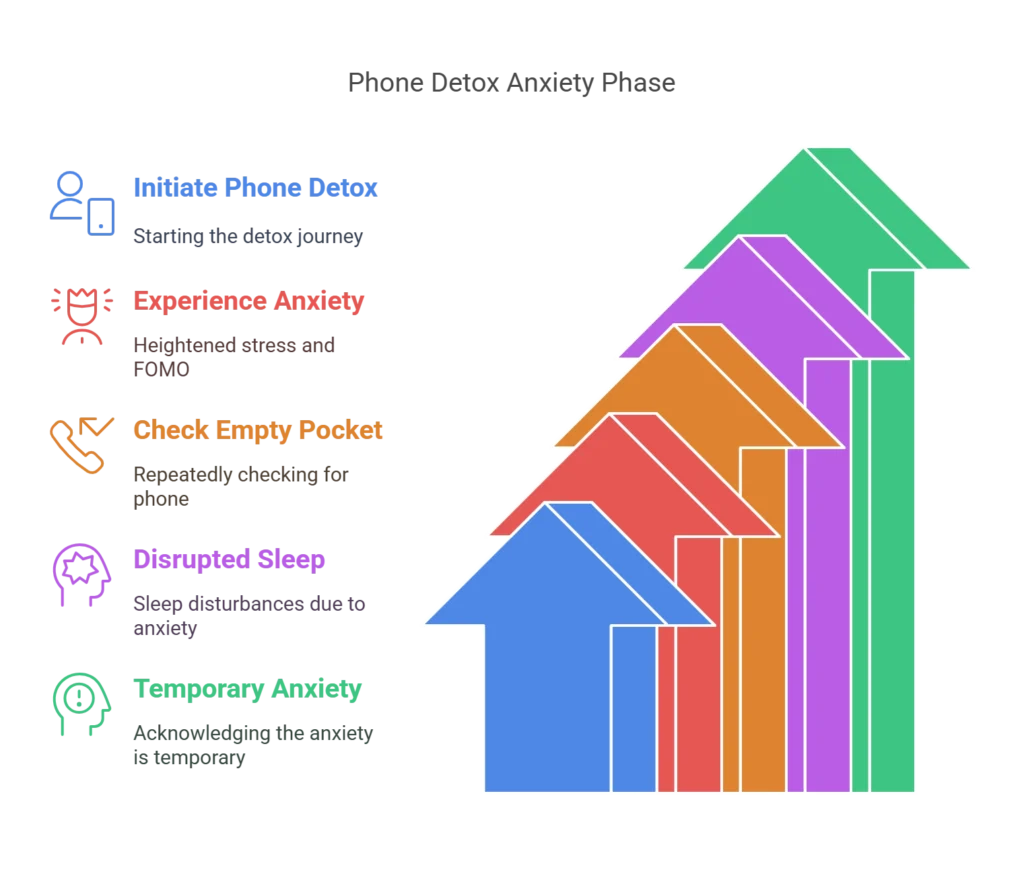
Hours 24-60: The Liberation Phase
- 72% of participants note improved focus and productivity
- Your attention span begins to recover
- You’ll start noticing your surroundings more vividly
- Time seems to slow down (in a good way)
This is when the magic starts to happen. For me, this phase brings a sense of mental spaciousness that’s hard to describe like someone turned down the volume on the constant mental chatter.
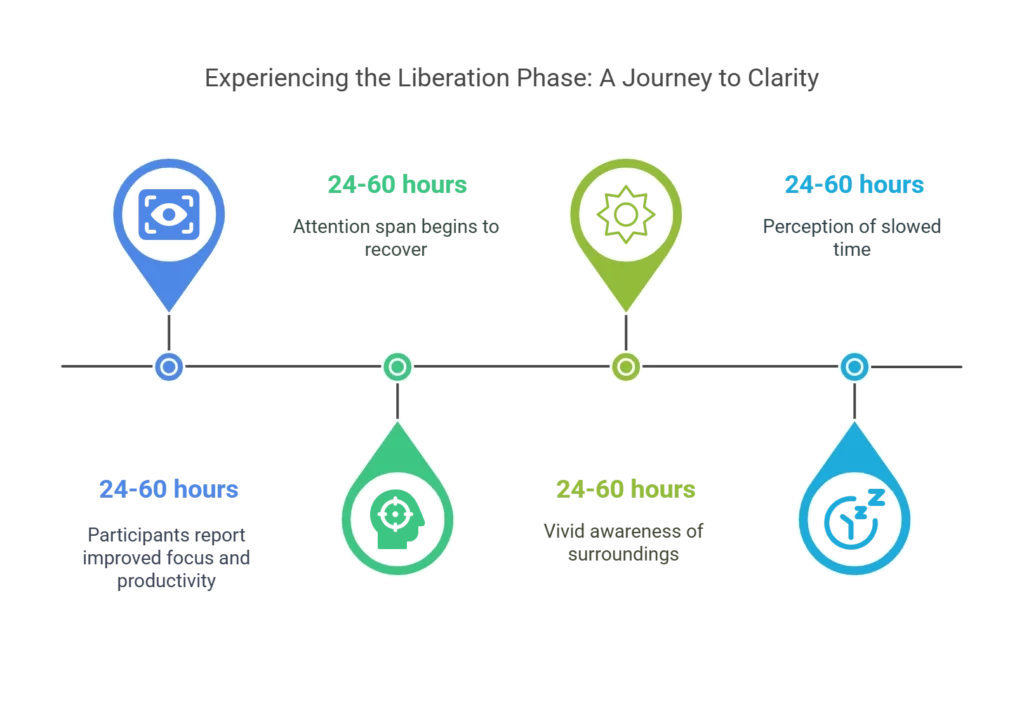
Hours 60-72: The Recalibration Phase
- 41% experience periods of boredom or understimulation
- Your brain starts to seek different forms of stimulation
- Creative thinking often emerges during this time
- You may notice improved face-to-face interactions
By this point, I typically feel significantly more present in conversations and find myself reaching for books or going outside instead of reflexively grabbing for my phone.
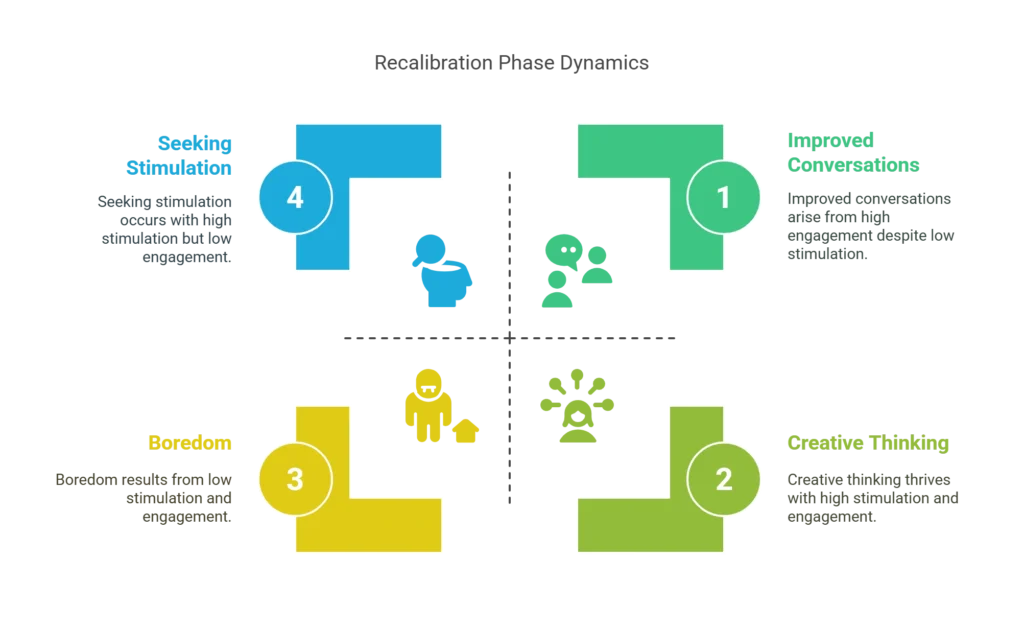
The Neurological Reset Button: What Science Tells Us
The researchers in the Heidelberg-Cologne study found something remarkable increased serotonin receptor activity in the dorsal raphe nucleus, a region involved in mood regulation. This dual effect on both dopamine (reward) and serotonin (mood) systems explains why many people report feeling mentally clearer and emotionally more stable after just three days.
Even more fascinating is the timing:
- 24-48 hours: Peak craving intensity linked to amygdala hyperactivity
- 48-72 hours: Prefrontal cortex engagement surpasses baseline, indicating regained inhibitory control
- Beyond 72 hours: Neural changes plateau, suggesting the most critical shifts happen within that three-day window
This timeline suggests there’s something special about that 72-hour mark it’s not arbitrary but represents a neurological tipping point for resetting addictive patterns.
The Social Paradox: Connection vs. Isolation
One of the most interesting findings across multiple studies is how a phone detox affects our social experiences. While 63% of participants reported deeper in-person interactions, about 29% experienced increased loneliness due to disconnection from digital social networks.
Brain scans reveal why this happens:
- Increased activation in mirror neuron systems during face-to-face exchanges (the parts of your brain that help you empathize)
- Decreased activity in the default mode network during solitary periods (the parts active when you’re alone with your thoughts)
This explains why many people (myself included) find their in-person conversations become richer and more meaningful during a detox, while simultaneously feeling occasional pangs of disconnection from their broader social sphere.
How to Do a 3-Day Phone Detox Without Losing Your Mind
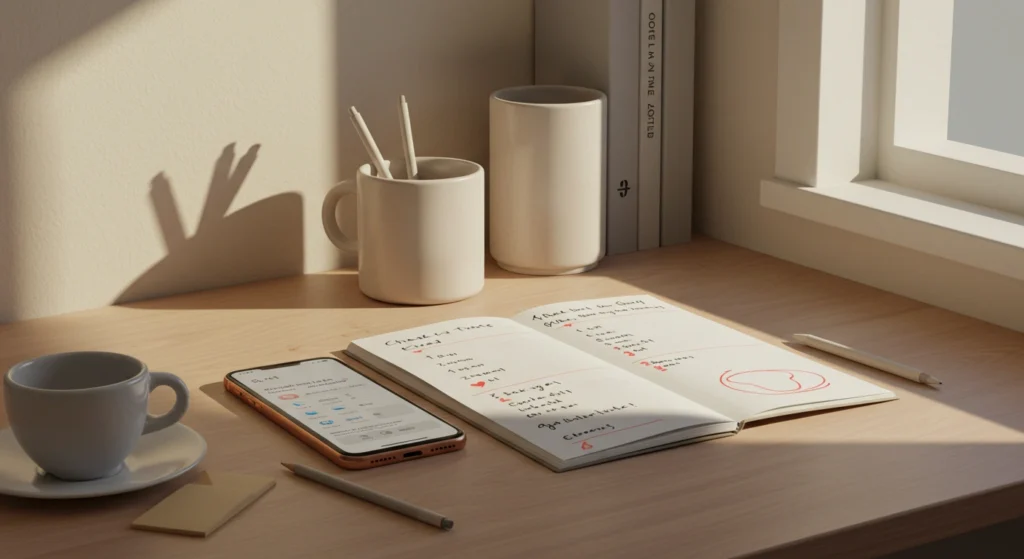
Based on the research, the most successful approach isn’t complete cold turkey. The Heidelberg study pioneered an “essential use” protocol that allowed for:
- Work-related tasks (like email)
- Navigation apps when necessary
- Scheduled communication windows
This approach increased compliance dramatically (92% adherence vs. 64% in total abstinence studies). From personal experience, I’ve found that setting specific “check-in” windows (say, 15 minutes at noon and 6 PM) helps manage anxiety while still getting the benefits of the detox.
Here’s a practical framework based on the research:
Phase 1 (Days 1-3)
- Remove non-essential apps
- Disable ALL push notifications
- Schedule 2-3 daily check-in windows
- Tell friends and family you’re doing a detox
- Keep a journal of your experience
Phase 2 (Days 4-14, if you choose to continue)
- Gradually reintroduce only the most essential functions
- Set usage caps enforced via Screen Time controls
- Practice mindfulness when using your phone
Phase 3 (Long-term maintenance)
- Consider monthly 24-hour mini-detoxes
- Keep notifications disabled for most apps
- Establish phone-free zones in your home
If you struggle with time management in general, you might also find these ADHD apps for time management helpful for maintaining boundaries with your technology both during and after your detox.
The Reality Check: Measurement vs. Perception
One fascinating aspect of the research is the difference between how much people think they reduce their usage versus the actual reduction:
| Activity | Self-Reported Reduction | Actual Reduction |
|---|---|---|
| Social Media | 58% | 41% |
| Messaging Apps | 32% | 27% |
| Passive Scrolling | 47% | 63% |
This mismatch in perception highlights something important we’re not always aware of how much we use our phones or how much we’ve cut back. Using screen time tracking can provide a reality check and help you measure your actual progress.
Why Most People Fail at Phone Detoxes

The research shows a 17% rebound in usage after the detox period, primarily driven by:
- Workarounds like using tablets or laptops instead (42% of cases)
- Making up for lost time with late-night scrolling (33%)
- Social pressure to respond and be available (25%)
This suggests that for lasting change, you need to address the environment around your phone use not just the phone itself. I’ve found that getting friends or family to join you in a detox can significantly increase your chances of success.
Beyond the 3-Day Mark: What Happens Next?
While the most dramatic neural changes happen within 72 hours, longer-term studies show that two-week digital detoxes produce more sustained reductions in smartphone dependency. However, the three-day mark seems to be a critical threshold that “primes” your brain for longer-term change.
The research suggests a 22% reduction in problematic smartphone use scores that persisted even at the two-week follow-up. This contrasts with earlier findings where effects from one-week detoxes disappeared within 14 days, hinting at something special about hitting that 72-hour mark.
My Personal Experience: The Unexpected Benefits
When I stepped away from my phone for three days, I noticed several changes that align perfectly with the research:
- My anxiety levels dropped significantly by day two
- I felt more focused and less mentally scattered
- I became more present in conversations
- I enjoyed simple moments without the urge to document them
- My sleep improved dramatically
The most surprising benefit was how much better I became at enjoying the present moment whether sitting in a park, having dinner with friends, or just relaxing at home. Without the constant pull to check my phone, I rediscovered what it feels like to be fully immersed in an experience.
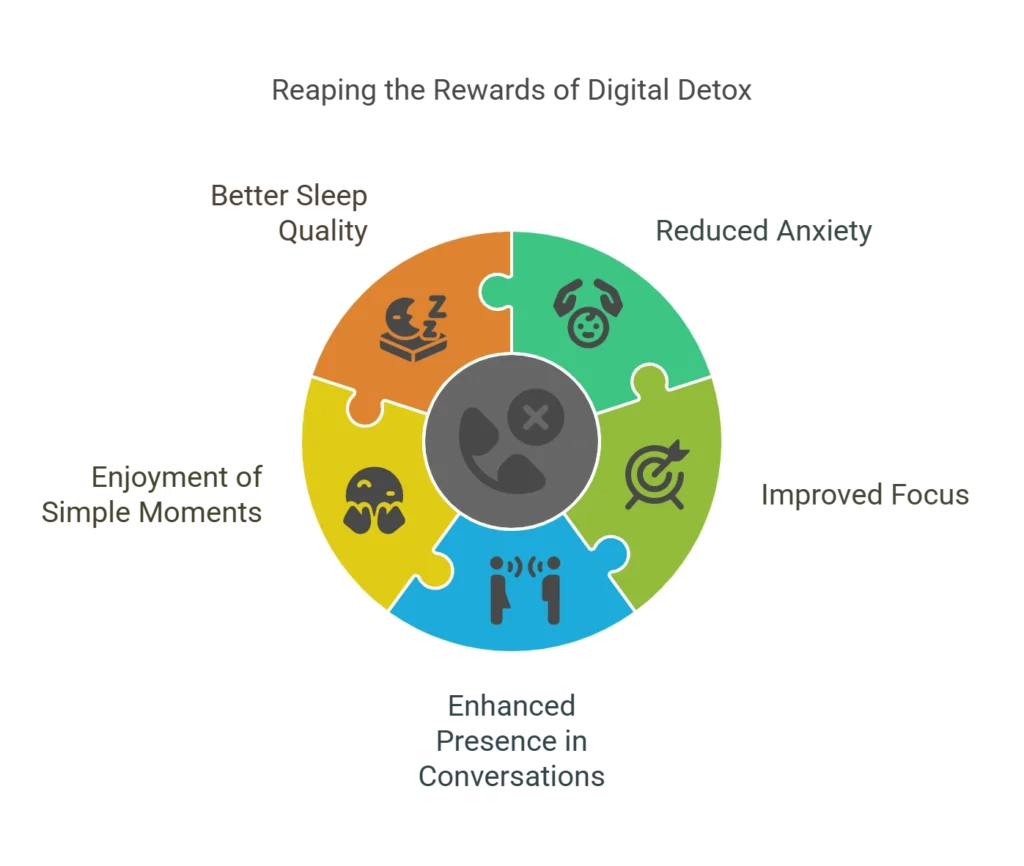
Is a Phone Detox Right for You?
Consider trying a 3-day phone detox if you:
- Feel anxious when separated from your phone
- Check your device more than 50 times daily
- Use your phone before bed and immediately upon waking
- Find yourself scrolling without purpose
- Notice your attention span has shortened
- Feel mentally foggy or constantly distracted
The beauty of this intervention is its accessibility it costs nothing, requires no special equipment, and can be done anywhere. Plus, the neuroscience backing it suggests that even if you don’t feel dramatic changes, your brain is still benefiting.
Final Thoughts: A Reset, Not a Rejection
A 3-day phone detox isn’t about permanently abandoning technology it’s about resetting your relationship with it. The goal is mindful usage rather than mindless consumption.
As someone who’s experienced the benefits firsthand, I can tell you that those three days can change how you view your device. It transforms from something that controls your attention to a tool that serves your needs when you choose to use it.
If you’ve tried a phone detox or are considering one, I’d love to hear about your experience. And remember your brain might just thank you for those 72 hours of digital peace.

